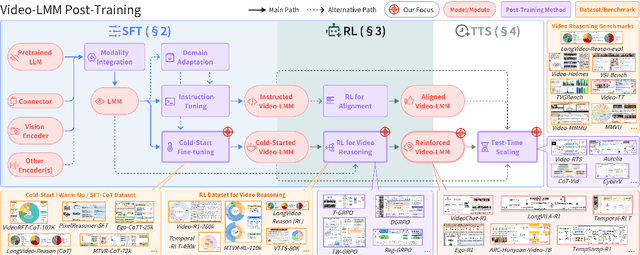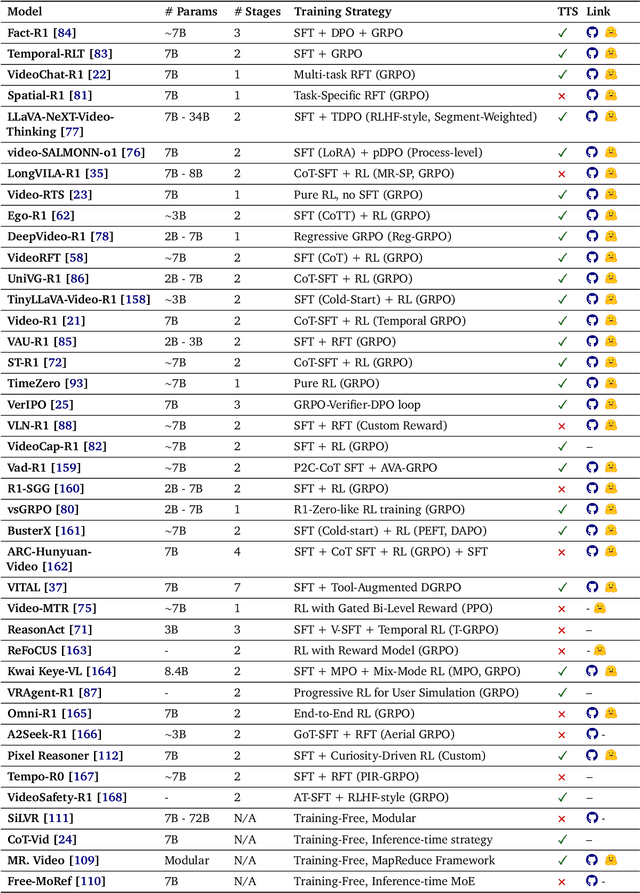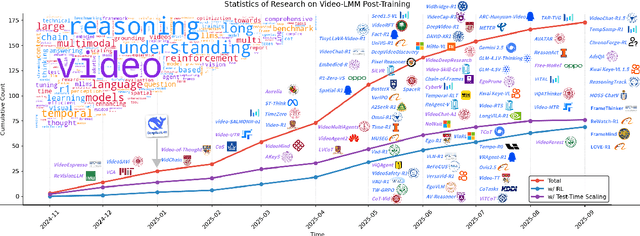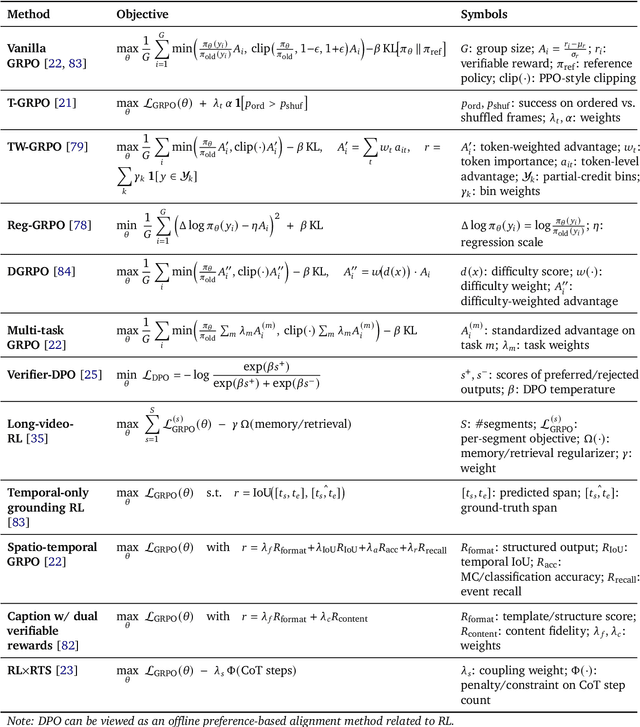Zhangyun Tan
Video-LMM Post-Training: A Deep Dive into Video Reasoning with Large Multimodal Models
Oct 06, 2025



Abstract:Video understanding represents the most challenging frontier in computer vision, requiring models to reason about complex spatiotemporal relationships, long-term dependencies, and multimodal evidence. The recent emergence of Video-Large Multimodal Models (Video-LMMs), which integrate visual encoders with powerful decoder-based language models, has demonstrated remarkable capabilities in video understanding tasks. However, the critical phase that transforms these models from basic perception systems into sophisticated reasoning engines, post-training, remains fragmented across the literature. This survey provides the first comprehensive examination of post-training methodologies for Video-LMMs, encompassing three fundamental pillars: supervised fine-tuning (SFT) with chain-of-thought, reinforcement learning (RL) from verifiable objectives, and test-time scaling (TTS) through enhanced inference computation. We present a structured taxonomy that clarifies the roles, interconnections, and video-specific adaptations of these techniques, addressing unique challenges such as temporal localization, spatiotemporal grounding, long video efficiency, and multimodal evidence integration. Through systematic analysis of representative methods, we synthesize key design principles, insights, and evaluation protocols while identifying critical open challenges in reward design, scalability, and cost-performance optimization. We further curate essential benchmarks, datasets, and metrics to facilitate rigorous assessment of post-training effectiveness. This survey aims to provide researchers and practitioners with a unified framework for advancing Video-LMM capabilities. Additional resources and updates are maintained at: https://github.com/yunlong10/Awesome-Video-LMM-Post-Training
MMPerspective: Do MLLMs Understand Perspective? A Comprehensive Benchmark for Perspective Perception, Reasoning, and Robustness
May 26, 2025Abstract:Understanding perspective is fundamental to human visual perception, yet the extent to which multimodal large language models (MLLMs) internalize perspective geometry remains unclear. We introduce MMPerspective, the first benchmark specifically designed to systematically evaluate MLLMs' understanding of perspective through 10 carefully crafted tasks across three complementary dimensions: Perspective Perception, Reasoning, and Robustness. Our benchmark comprises 2,711 real-world and synthetic image instances with 5,083 question-answer pairs that probe key capabilities, such as vanishing point perception and counting, perspective type reasoning, line relationship understanding in 3D space, invariance to perspective-preserving transformations, etc. Through a comprehensive evaluation of 43 state-of-the-art MLLMs, we uncover significant limitations: while models demonstrate competence on surface-level perceptual tasks, they struggle with compositional reasoning and maintaining spatial consistency under perturbations. Our analysis further reveals intriguing patterns between model architecture, scale, and perspective capabilities, highlighting both robustness bottlenecks and the benefits of chain-of-thought prompting. MMPerspective establishes a valuable testbed for diagnosing and advancing spatial understanding in vision-language systems. Resources available at: https://yunlong10.github.io/MMPerspective/
 Add to Chrome
Add to Chrome Add to Firefox
Add to Firefox Add to Edge
Add to Edge